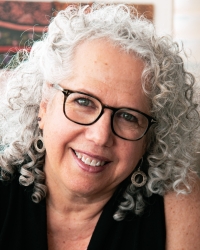Published in ConnectED Newsletter - Volume 6 - Issue 4 - June 2023
Languages allow speakers to communicate a wide variety of messages, including some differences that are obvious and others that are more subtle. The resources of English grammar allow speakers to choose between, for example, She taught Bill French and She taught French to Bill. What is the difference?
A paper recently presented by Nancy Stern, Associate Professor in the Bilingual Education and TESOL program, compares different theoretical approaches to this grammatical phenomenon, which is often referred to as a ditransitive construction. Prof. Stern reviewed attested data and found that the relevant factor is not the success of the activity, but rather, the degree of agency and activity that the learner has in the process. This finding is consistent with a Columbia School of Linguistics semantic analysis based on the Degree of Control that the participants have in the activity.
According to Prof. Stern, it is important not only for language teachers, but for all teachers to have an understanding of the use of language by individuals and groups. She explains that language is not only the medium through which education takes place, but it is also essential to understanding reading, writing, and language learning. “While many people were raised to think of grammar in terms of algorithms about what is correct or incorrect, the analysis described here offers a different view: grammar is a resource that students and all speakers can use for communicative and expressive purposes,” she argues. Moreover, in the theoretical approach developed, language is a tool whose structure and use is shaped both by its communicative function, and by the psychological and social characteristics of its human users. Prof. Stern’s analysis reveals some of the ways in which speakers and writers use the resources of their language to reach their communicative goals.
The paper was presented at the 13th International Columbia School Conference on the Interaction of Linguistic Form and Meaning with Human Behavior. Co-sponsored by the Columbia School Linguistic Society and the Columbia University Faculty Seminars, the conference included participants from across North America, South America, and Europe, and included a special session on the role of linguistic theory in language teaching.
Last Updated: 06/01/2023 17:34
